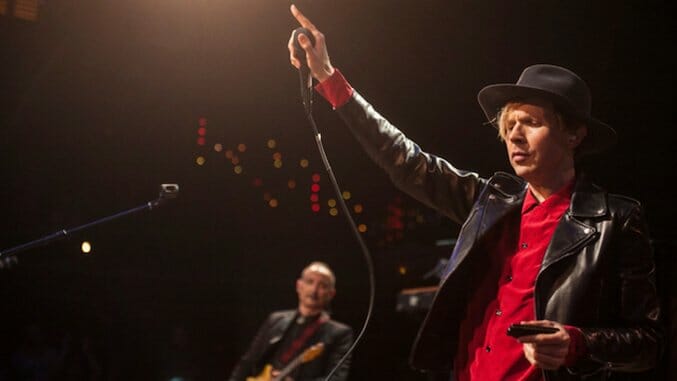A Documentary 40 Years in the Making
Filmmaker Keith Maitland talks the music and community of A Song for You: The Austin City Limits Story
Photo credit: Scott Newton/ACL/KLRU
Iggy Pop writhes on stage, punching the air and gyrating like a primal animal while Josh Homme and the band crank out “Lust for Life.” At 68, Pop has more energy than someone half his age. “I think I wore you guys out,” he jokes before playing another 40 minutes of raw, unbridled music, the Austin skyline shining bright behind him. But it’s not the actual skyline, it’s the backdrop at the Austin City Limits studio and this is Pop’s first time on the program. With his recent hints at retirement, it makes sense that ACL would choose him for the first episode of the show’s 42nd season.
That’s right, Austin City Limits is now in its 42nd season, and there are no signs of slowing down. Airing on PBS, ACL is the longest-running music series in television history. Showcasing everyone from Willie Nelson, Ray Charles, Radiohead, Beck, Wilco, the Pixies and about 80 others, the program has brought some of the greatest musicians in the world into the homes of millions of people. There’s no question that ACL has a place in history, but the actual history of the show isn’t as well known, until now.
Director Keith Maitland has two films at this year’s SXSW festival, Documentary Feature Competition film—and Grand Jury Winner—Tower, and 24 Beats Per Second selection A Song For You: The Austin City Limits Story, which sheds light not only on the history of Austin City Limits, but what’s to come, and the tight-knit group that makes it run.
Utilizing a mix of concert footage (both archival and shot for the film), interviews and behind-the-scenes material, Maitland depicts the intricacies involved in the show, while also exploring its grander impact and growth. Paste sat down with Maitland to discuss A Song For You and the intermingling of music, film, community and Austin.
Paste: Congratulations on having two films in the festival. How’s it going for you?
Keith Maitland: It’s wild. I’m assuming this is a once-in-a-lifetime experience, so I’m trying to make the most of it. The most exciting thing for me is that there are really people in this town who are connected to both stories and subjects intimately. There’s a lot of overlap of the two communities of this film, and both films really reflect what our bigger community of Austin is about.
The story of Tower [Ed. note: the 1966 sniper shootings at the University of Texas at Austin] is the worst thing that Austin ever exported to the world, and Austin City Limits is the best thing that Austin has given to the world. I’m thrilled to be a part of both, and I’m thrilled to present them both here.
I love SXSW. I’ve made three films; they’ve all premiered at SXSW. Actually, my first night in Austin was at SXSW in 1994 when I was a senior in high school. I came here for spring break and just fell in love with Austin. It’s my home. It brings the world to us, which is nice. And then everyone goes away, which is also nice.
Paste: There’s so much history and so much music in the film. How did you get involved with this project and how did you approach the structure?
Maitland: We started in the fall of 2013. What happened was my other film Tower, I pitched it to PBS, and they were interested. A few weeks later, I got a call from an executive at PBS in D.C. who said, “I know you’re busy with Tower, but there’s another project I thought you might be interested in. Have you ever heard of Austin City Limits?” and naturally I had, so he says, “Well, they’re looking for a director for a project. Would you want to meet with them?” I said, “Of course, yes.”
So, I went into that meeting in October of 2013. There was a process of a series of interviews where I heard what they had in mind, and I told them what I would want to do. Basically what I told them was that I’ve snuck backstage to just about every concert I’ve been at since I was 15 years old, and the kind of film I would want to make would capture the feeling of what it is to sneak backstage—not to be a part of their crew, but to be an observer of their crew, who is a little bit giddy to be there but really sees the details, and the type of person who kind of talks their way onto Willie Nelson’s bus and gets to hang out in the corner for an hour or two, and then when the show starts, leaves backstage to grab a spot right in front of the singer. I got to do all of those things in the making of the film, so it was really great.
-

-

-

-

-

-

-

-

-

-

-

-

-

-

-

-

-

-

-

-

-

-

-

-

-

-

-

-

-

-

-

-

-

-

-

-

-

-

-

-








































